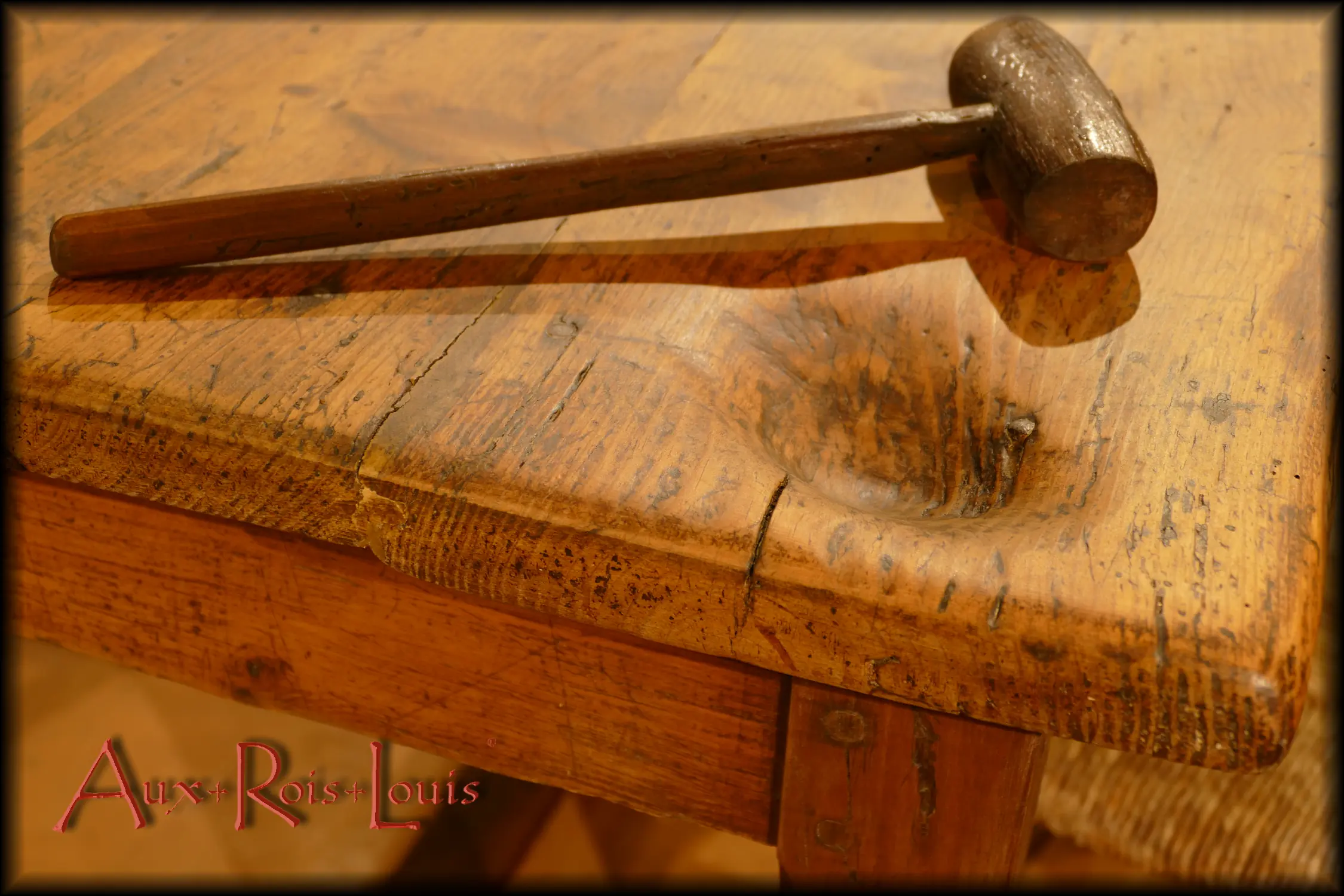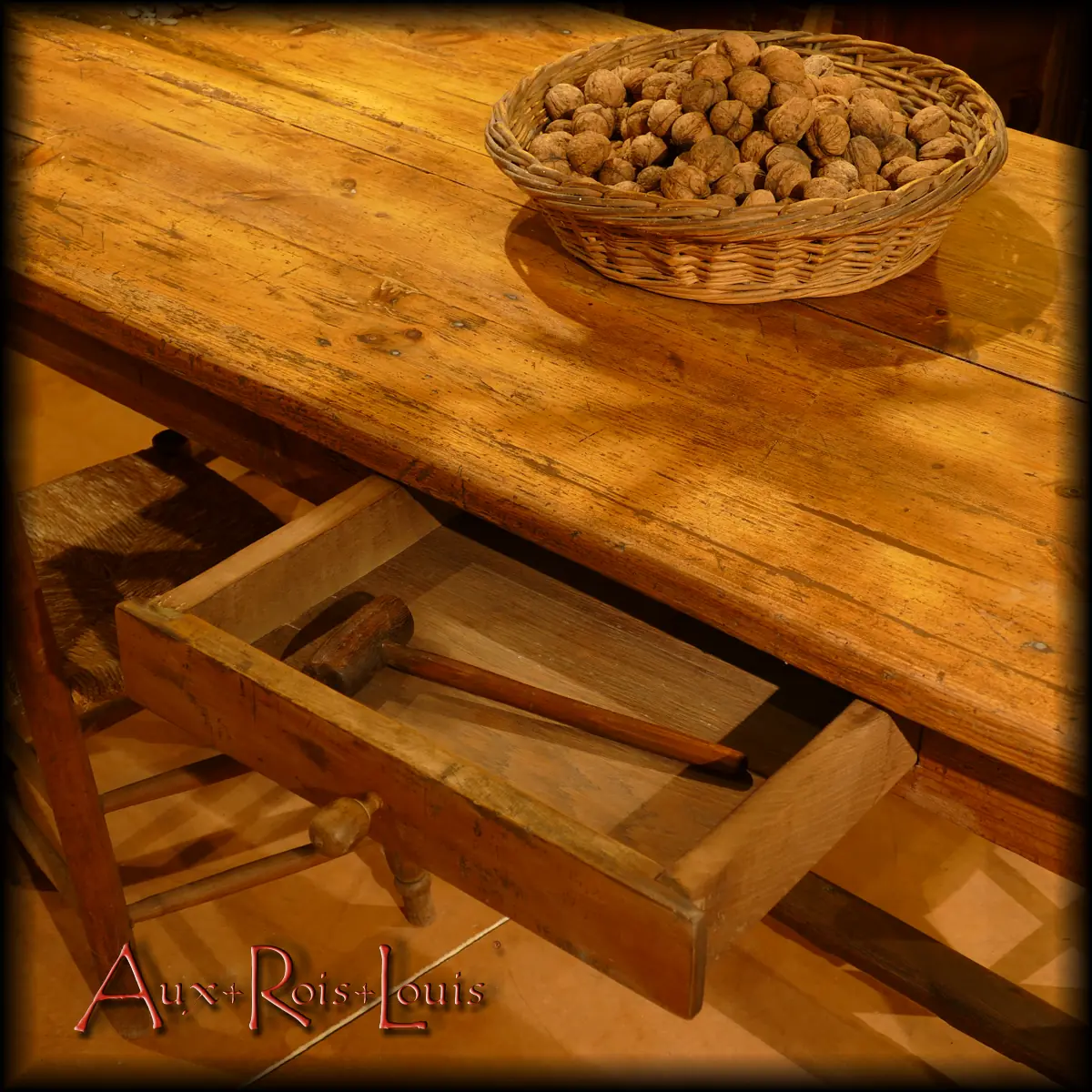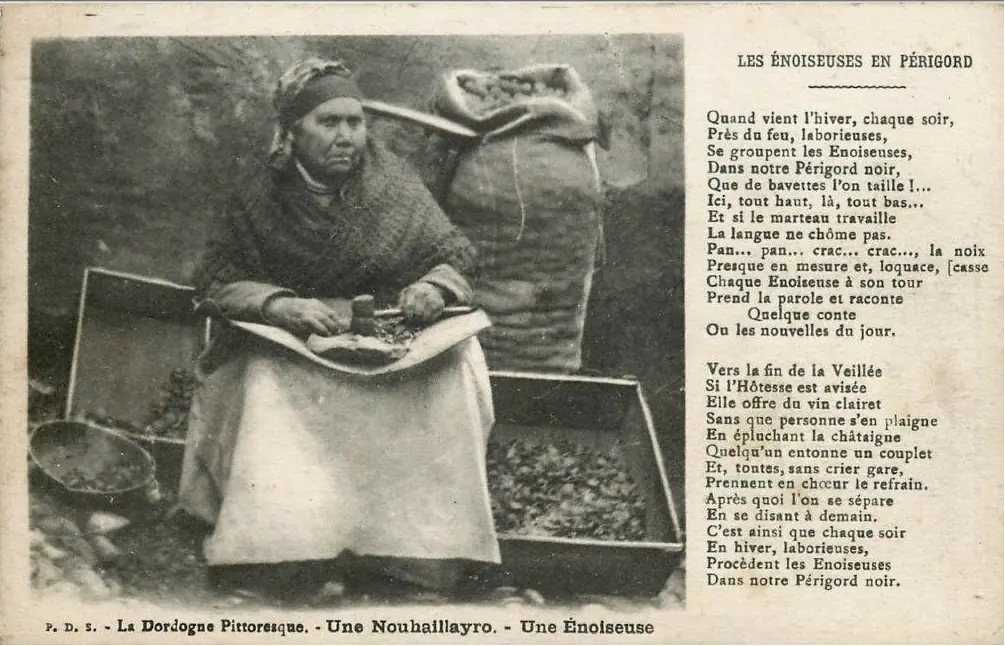
These two vintage postcards perfectly recreate the atmosphere and setting of these moments of glory of “veillées d’énoisage”. Just to imagine the sound and smell forever imprinted in one’s heart, nothing like savouring this so nicely worded poem:
Les Énoiseuses en Périgord “Périgord women shelling walnuts”
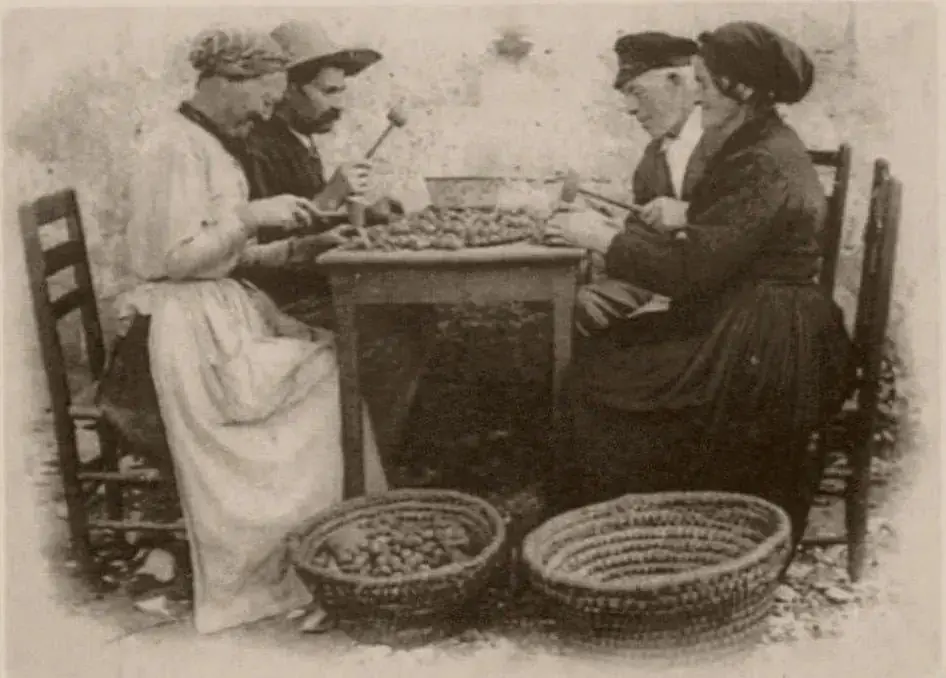
When winter comes, every evening,
working hard, near the hearth,
the énoiseuses gather,
in our “Black Périgord”,
So many natters they have!…
quietly or loudly…
Crack crack the hammer never stops
Chatting doesn’t either.
Bang…Bang…crack…crack…
Almost beating time, chatter jabber
In her turn every énoiseuse
tells a story
some old tale
or the news of the day.
Almost at the end of the late evening fireside gathering
the hostess being wise and sound
offers a glass of light red clairet
nobody complaining about it!
while peeling the chestnut.
someone strikes up a verse
and all the women, without warning,
join the chorus
then it’s time to leave
and say see you to-morrow
this is how every night
in winter, hard working
énoiseuses carry on
in our “Périgord Noir”.
Larch wood table for cracking walnuts (énoisage) – 19th century – Haute-Loire – [MP051]
Such vintage antique countryside pieces of furniture, so thoroughly and cleverly shaped in accordance with their use, are exceptional. Here is pictured an authentic “table à énoiser” (a special table to crack and open walnut shells). “Énoisage” is hand peeling or shelling walnuts that were previously gathered and dried. You have to imagine two separate “teams” with specific plots or spaces. On the edge of the table, the female “casseuses” wedge the nuts in special hollows in the thick larch wood table plateau. Using a wooden mallet (“maillet”) called “tricote”, they sharply but carefully snap and break the shell without crushing the tender kernels (“cerneaux”) that they push, with a wave of their hand, towards the centre of the table. The women often gently and very carefully remove the “cerneaux” with abraded old knives, not to spoil or cut into the kernel or their fingers. These “cerneaux”, well cleaned, heated up and softened will then be ground up under the millstone to make walnut oil. It was first mainly used as fuel for lighting. Using it as an excellent seasoning for cooking is more recent. The handmade shelling of walnuts has long been a further activity in rural occitan regions with huge walnut orchards. In the four corners of this special larch wood “table à énoiser” one can see the hollows left by the énoiseuses cracking walnuts, made deeper and softened after so many “velhadas”. Time has rarely left such moving memorable marks. This genuine rural piece of furniture from around the foothills of Velay is a vibrant testimony of a spirit o friendly mutual assistance, neighbours all together sharing their homes; the “énoiseuses” would sometimes improvise friendly country dances, all wearing clogs and to the sound of “cabrettes” (like bagpipes) and accordions.
Dimensions:
Length: 2 m, height: 75 cm, width: 82 cm
Reference: [MP051]
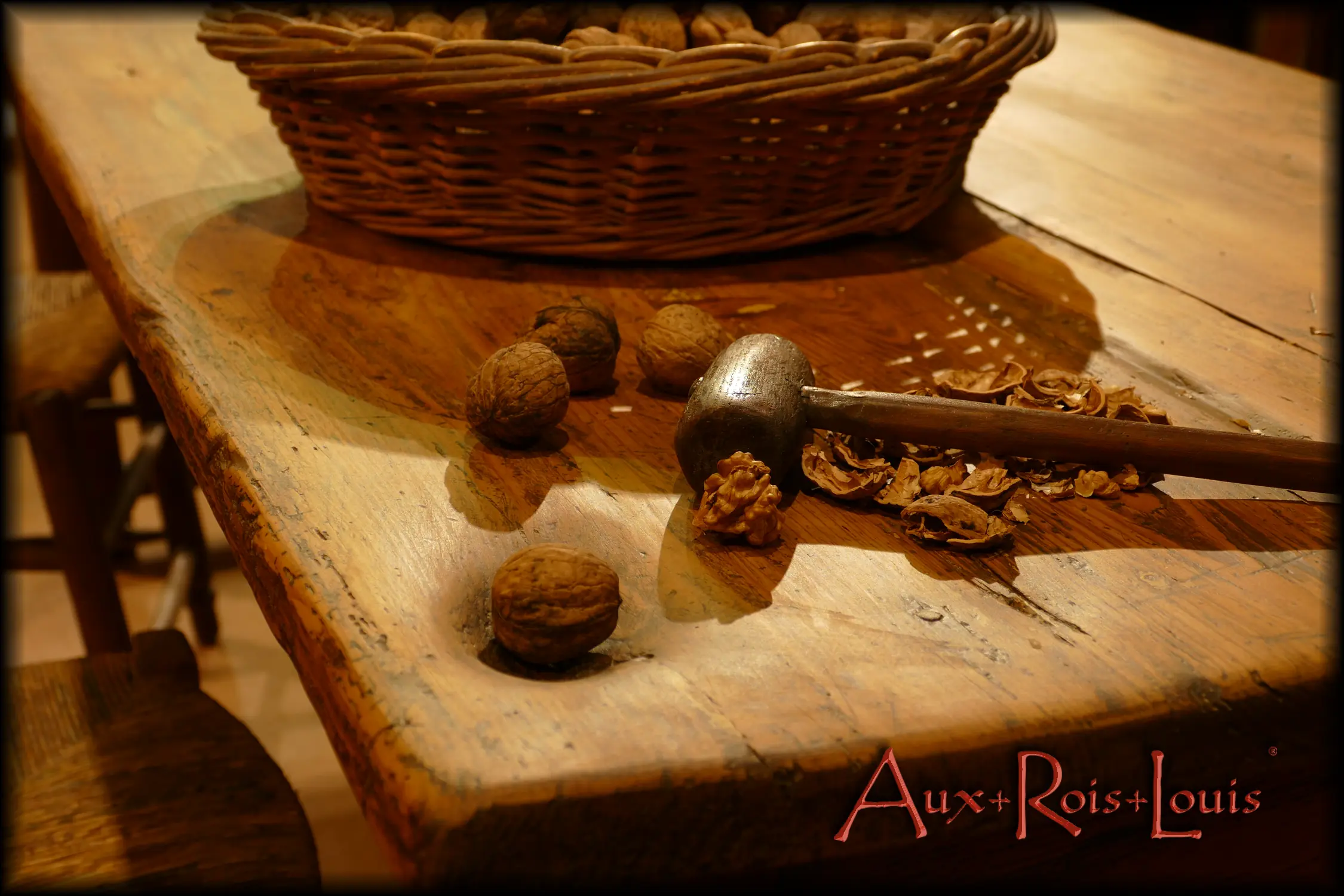
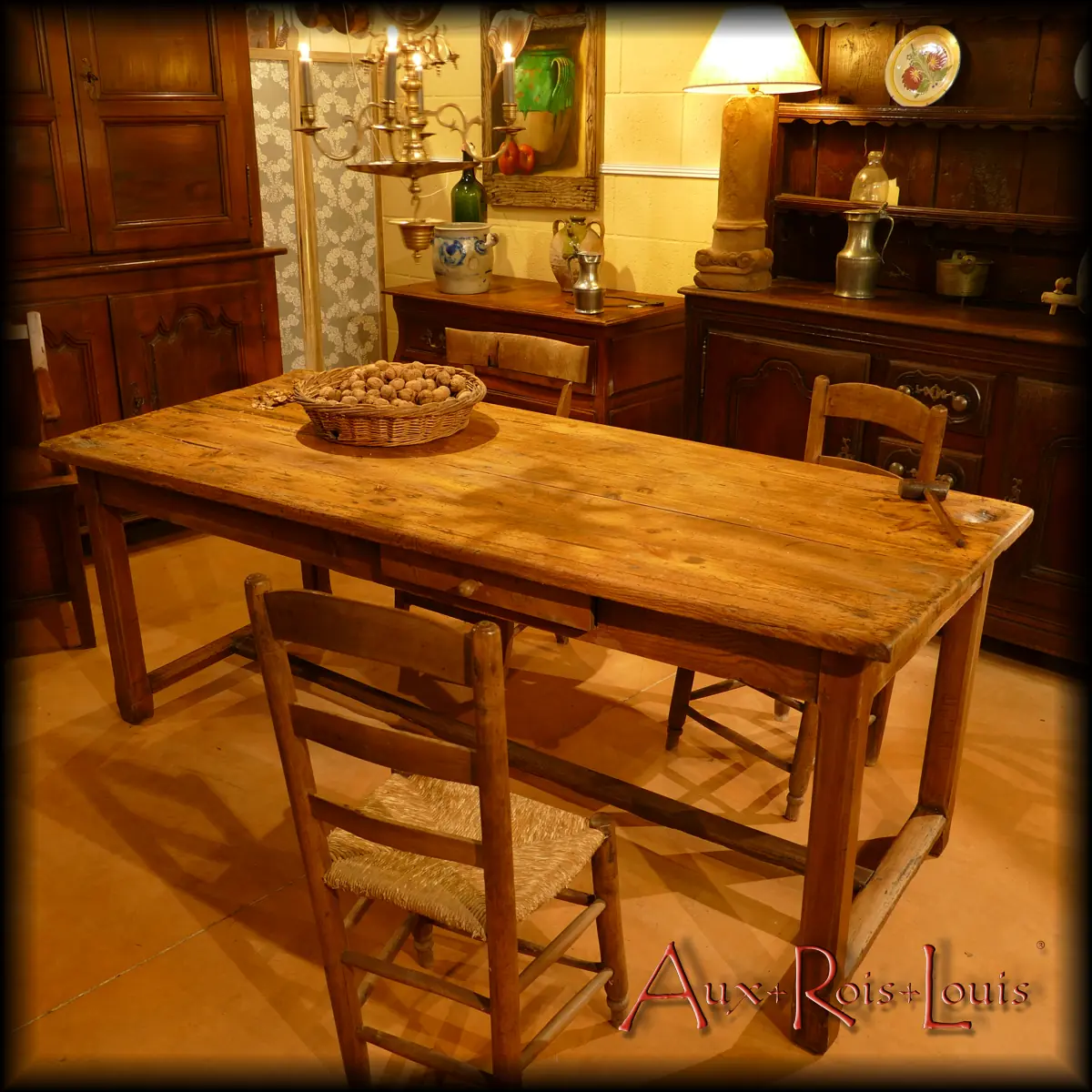

![Larch wood table for cracking walnuts (énoisage) – 19th century – Haute-Loire – [MP051]] This authentic "paysan" rural piece of furniture, from around the foothills of Velay, is a testimony of the spirit of friendly mutual assistance among neighbours who went to one another's homes to do the "énoisage" all together during the late evening "velhada", sometimes improvising friendly little dances to the sound of clogs, "cabrettes" and accordions.](https://www.aux-rois-louis.com/wp-content/uploads/2023/10/MP051_P1670111-1200x600.webp)
![Larch wood table for cracking walnuts (énoisage) – 19th century – Haute-Loire – [MP051]] This authentic "paysan" rural piece of furniture, from around the foothills of Velay, is a testimony of the spirit of friendly mutual assistance among neighbours who went to one another's homes to do the "énoisage" all together during the late evening "velhada", sometimes improvising friendly little dances to the sound of clogs, "cabrettes" and accordions.](https://www.aux-rois-louis.com/wp-content/uploads/2023/10/MP051_P1670111.webp)
